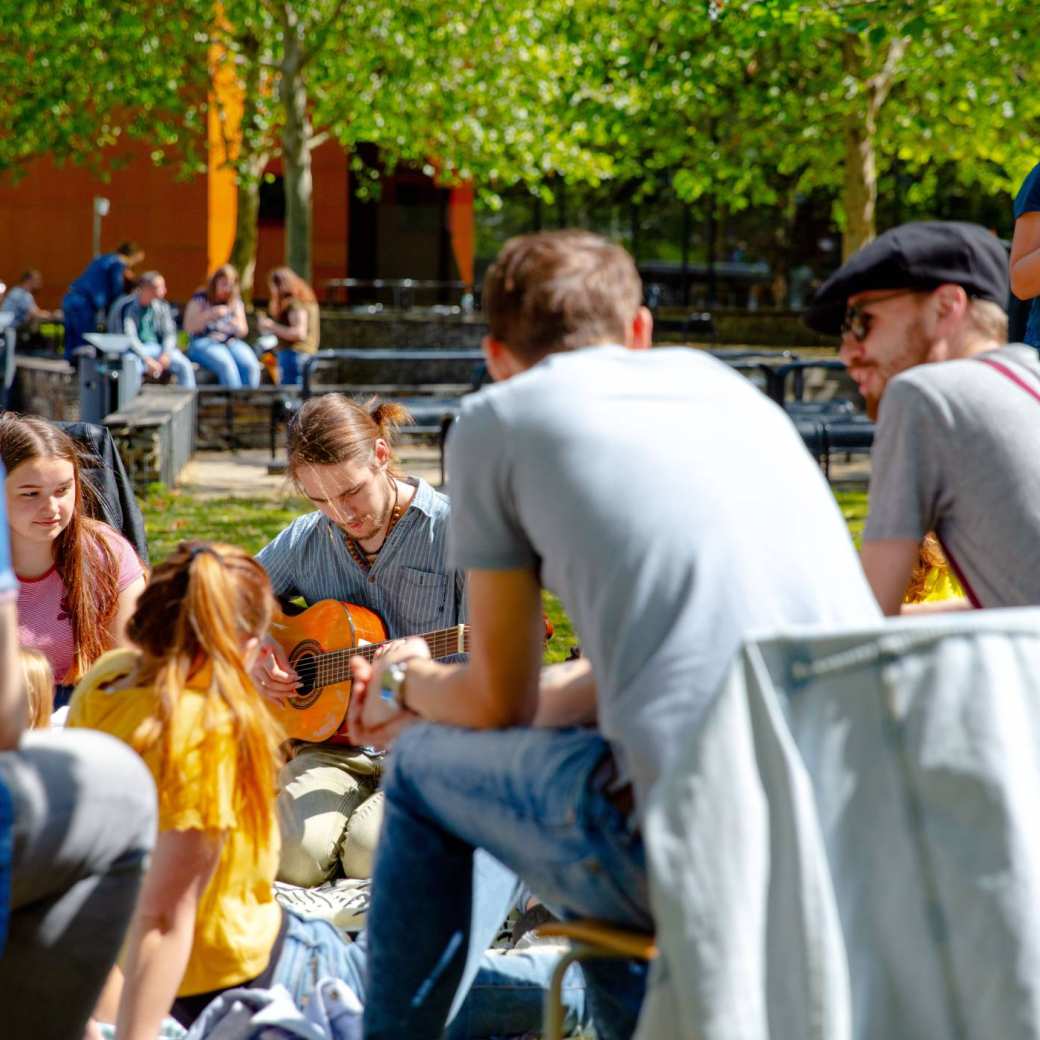Embedded Systems Design
Develop your design and prototype skills. Brush up on all things professional and practical. You learn the knowledge and skills you need to design an entire embedded system. And succeed in the industry.

The program in a nutshell
Your classes and workshops take place Monday through Friday. You get a feel for technical theory. How to strengthen your skill set. You go to workshops on putting the theory into practice. And take tests to see how far you’ve come.
Over the semester you work with classmates and/or others from different degree programs. To realize your final project: a design and working prototype of an embedded system. In a presentation, you show the basic principles you used to complete the project. Give a methodical breakdown of the process. And point out the phases of the V model in your results.

Program details
Learning outcomes
By the end of Embedded Systems Design you can:
- cross collaborate within a multidisciplinary environment
- show your skills in communication, consultation, reflection and cooperation
- design an embedded system
- describe the (technical) results that fit into the phases of the V model

Competences
You strengthen these competence areas during the program:
- Design skills
- Digital signal processing
- Linux
- Security
- System analysis and design
- Software development
- Multidisciplinary collaboration

Dutch way of learning
The atmosphere in a Dutch classroom is quite informal and your lecturers are easy to talk to. In fact, at HAN you’re seen as a partner in the learning process. Class sizes are small and your lecturers encourage you to actively participate in class. To ask questions and give your own opinion. They also stimulate you to be creative and to discover things for yourself.

HAN International Intro
Get a good start to your studies during this week of orientation:
- learn about living in the Netherlands
- become familiar with the campus
- get on board with your exchange program
- make new friends!

What about credits and grading?
At HAN we use the European Credit Transfer and Accumulation System, or ECTS. It’s the standard credit system used in higher education across Europe. How does it work? One credit = 28 hours of study. Think of contact hours. Time spent working on assignments. Preparing for exams.
One semester = 30 credits = 840 hours of study. To earn credits, you need to pass your exams. What counts as a pass? A grade of at least 5.5.

Admission
What are the admission requirements? And how do I apply?
